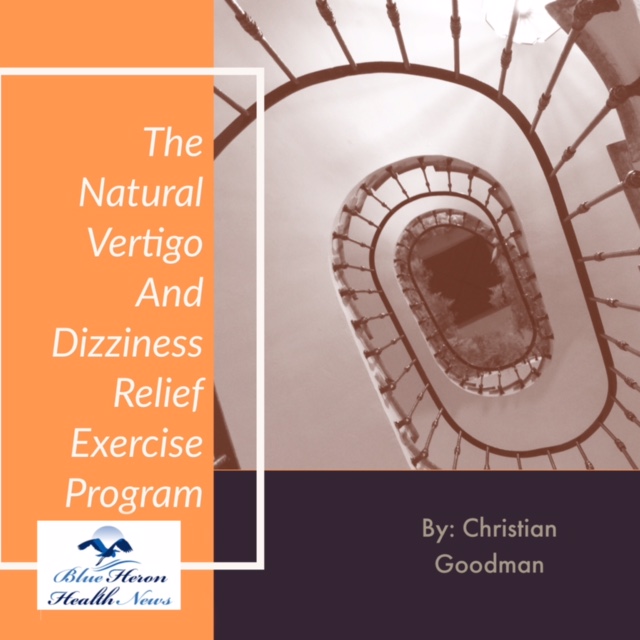
The Vertigo And Dizziness Program™ By Christian Goodman Vertigo and Dizziness Program is a designed to help stop vertigo and dizziness once and for all. Medical practitioner don’t know the exact cure for this condition but this program will show you exactly what you need to make this painful condition a thing of the past. This program has recommended a set of simple head exercises that help cure this condition.
Debunking vertigo misconceptions
Debunking misconceptions about vertigo is essential for better understanding the condition and ensuring effective treatment. Here are some common myths and the facts that clarify them:
1. Misconception: Vertigo is Just Dizziness
- Reality: Vertigo is not the same as general dizziness. It specifically refers to a spinning sensation or the feeling that either you or your surroundings are moving when they are not. Dizziness, on the other hand, can include lightheadedness, unsteadiness, or feeling faint, which are not necessarily related to vertigo.
2. Misconception: Vertigo is Always Caused by an Inner Ear Problem
- Reality: While inner ear problems, such as benign paroxysmal positional vertigo (BPPV) or Meniere’s disease, are common causes, vertigo can also result from other conditions, including neurological disorders (like stroke or multiple sclerosis), migraines, and even psychological conditions like anxiety. The cause should be properly diagnosed by a healthcare professional.
3. Misconception: Vertigo Only Affects Older Adults
- Reality: Vertigo can affect people of all ages, though certain conditions that cause vertigo (e.g., BPPV) are more common in older adults. Younger individuals may experience vertigo due to conditions like vestibular migraines, inner ear infections, or head injuries.
4. Misconception: Vertigo is Just a Minor Problem and Doesn’t Require Treatment
- Reality: While vertigo can sometimes be caused by minor conditions that resolve on their own, it can also be a symptom of a more serious underlying issue, such as a stroke or vestibular disorders. If vertigo is persistent, recurrent, or severe, it should be evaluated and treated by a healthcare professional to prevent further complications and improve quality of life.
5. Misconception: Medication is the Only Treatment for Vertigo
- Reality: Medication can help manage vertigo symptoms, but there are other treatments as well, depending on the cause. Vestibular rehabilitation therapy (VRT), a type of physical therapy, is often used to help improve balance and reduce symptoms. Specific maneuvers like the Epley maneuver for BPPV can also resolve certain types of vertigo. Lifestyle changes, stress management, and avoiding triggers can also play important roles in managing vertigo.
6. Misconception: Vertigo Means You Have to Avoid All Physical Activity
- Reality: While it’s important to avoid sudden movements during a vertigo episode, complete inactivity can actually worsen symptoms over time. Vestibular rehabilitation exercises, which focus on balance and coordination, can be incredibly effective in treating vertigo. It’s important to engage in the right type of activity under the guidance of a healthcare provider.
7. Misconception: Vertigo is Always Accompanied by Nausea and Vomiting
- Reality: While nausea and vomiting are common symptoms associated with vertigo, not everyone experiences them. Some people may only feel a sense of imbalance or spinning without any digestive distress. The severity and accompanying symptoms of vertigo vary depending on its cause.
8. Misconception: Vertigo Can Be Cured with a Simple Remedy
- Reality: There’s no one-size-fits-all remedy for vertigo. The treatment depends on its underlying cause. For some people, specific maneuvers or medications may provide immediate relief, but for others, long-term treatment such as vestibular rehabilitation therapy, lifestyle changes, or chronic management of the underlying condition may be necessary.
9. Misconception: Vertigo Always Means Something Serious
- Reality: While vertigo can sometimes signal a serious condition (such as a stroke), most cases are caused by less severe issues like BPPV or inner ear infections. However, any new or unexplained vertigo should be evaluated by a healthcare provider to rule out serious causes and determine the appropriate treatment.
10. Misconception: Vertigo is the Same for Everyone
- Reality: Vertigo can present very differently from person to person. Some may experience brief episodes of spinning, while others may feel persistent unsteadiness or lightheadedness. The symptoms, triggers, and underlying causes of vertigo can vary widely, which is why a thorough evaluation is essential for effective treatment.
Key Takeaway
Vertigo is often misunderstood, and the myths surrounding it can lead to confusion or delayed treatment. Understanding the realities of vertigo and seeking professional help when needed are crucial steps in effectively managing the condition. Whether it’s a benign issue or something more serious, addressing vertigo with the right information can lead to better outcomes.

The Vertigo And Dizziness Program™ By Christian Goodman Vertigo and Dizziness Program is a designed to help stop vertigo and dizziness once and for all. Medical practitioner don’t know the exact cure for this condition but this program will show you exactly what you need to make this painful condition a thing of the past. This program has recommended a set of simple head exercises that help cure this condition.